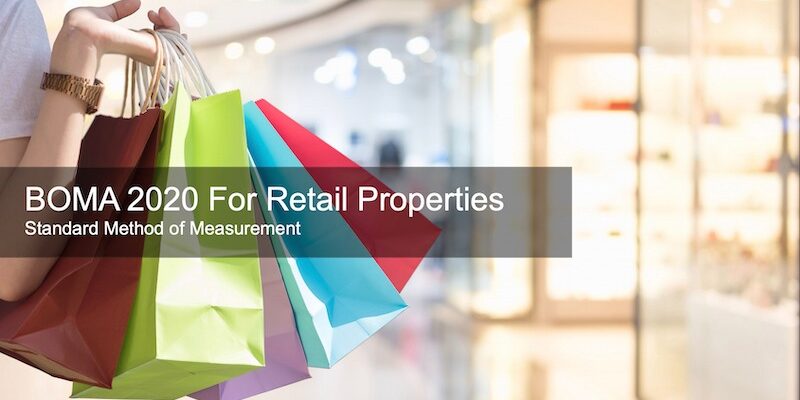Accurate floor area measurement is a crucial step in managing and leasing retail spaces. A standardized and internationally accepted technique for calculating floor area in retail buildings is offered by the BOMA Retail Standards. To guarantee accuracy and compliance, we will take you through all the necessary procedures and methods for measuring floor area following BOMA Retail Standards in this extensive guide.
Understanding BOMA Retail Standards
Overview of BOMA and its Standards
In the real estate sector, the Building Owners and Managers Association (BOMA) has long been regarded as a reliable source of information. Floor area measurement can be done accurately and consistently with the help of BOMA Retail Standards, which are tailored for retail environments. In contrast to other standards, BOMA Retail Standards offer particular perspectives designed for the retail industry.
Key Differences between BOMA Retail Standards and Other Measurement Standards
Understanding how BOMA Retail Standards differ from other widely used real estate measurement techniques is crucial. Comprehending the significance of BOMA Retail Standards for retail properties requires understanding these distinctions.
Preparing for Measurement
Before diving into measurement, several preparatory steps are essential to ensure accuracy:
Gathering Necessary Tools and Equipment
Learn how to measure floor area per boma retail Standards effectively, you’ll need specific tools and equipment, including laser measures, floor plan software, and other measuring instruments. Ensuring you have the right tools is the first step towards precision.
Identifying the Areas to Be Measured
Clearly define the boundaries of the areas you intend to measure. This includes distinguishing between common areas, rentable spaces, and service areas.
Establishing a Clear Plan for Measurement
Having a well-thought-out plan ensures that your measurement process is organized and efficient. It also minimizes errors that can occur due to confusion or oversight during the measurement process.
Preparing the Space for Accurate Measurement
Before taking measurements, make sure the space is ready. Remove any obstacles or obstructions that might hinder accurate measurements.
Measurement Techniques
Gross Floor Area (GFA) Measurement
GFA is a fundamental concept in BOMA Retail Standards. It includes all the floor area within the retail space, including common areas, service areas, and tenant spaces. Follow these steps for accurate GFA measurement:
- Measure the perimeter of the retail space.
- Subtract any exclusions (e.g., vertical penetrations, stairwells) from the total area.
- Account for common areas that may be shared among multiple tenants.Rentable Area Measurement
Rentable Area is the space available for tenant use and lease. To measure Rentable Area accurately:
- Begin with the GFA measurement.
- Deduct common areas shared among multiple tenants.
- Account for service areas and other exclusions.Common Challenges and How to Address Them During Measurement
Challenges such as irregular layouts, non-standard shapes, or shared spaces can complicate measurements. Understanding these challenges and how to overcome them is crucial for accurate results.
Documentation and Reporting
Organizing Measurement Data
Organize all measurement data systematically to ensure clarity and ease of reference. Proper documentation is essential for compliance and auditing purposes.
Creating Accurate and Detailed Floor Plans
Accurate floor plans are the cornerstone of BOMA Retail Standards compliance. These plans should clearly show all measured areas, exclusions, and common spaces.
Compiling Measurement Reports in Compliance with BOMA Retail Standards
When creating measurement reports, adhere to BOMA Retail Standards guidelines to ensure accuracy and consistency. These reports are often required for lease agreements and audits.
Quality Assurance and Audit
Importance of Quality Assurance in Floor Area Measurement
Quality assurance is vital to catch any errors or inconsistencies in the measurement process. Regular checks help maintain the accuracy of your measurements.
Conducting Internal Audits for Accuracy
Internal audits should be a routine part of your floor area measurement process. These audits identify any discrepancies and ensure ongoing compliance.
Preparing for External Audits, If Required
In some cases, external audits may be necessary to validate your measurements. Being well-prepared for these audits ensures a smooth process and avoids potential issues.
Conclusion
For successful retail property management and leasing, precise floor area measurement is essential. The BOMA Retail Standards offer a dependable structure for accomplishing this precision. Property managers and other professionals can guarantee accuracy and adherence to these industry-leading standards using the methods and procedures described in this extensive guide.
For more information and assistance with floor area measurement per BOMA Retail Standards, feel free to contact Measure Up Corp. We are here to support your measurement needs and help you achieve accurate and compliant results.

